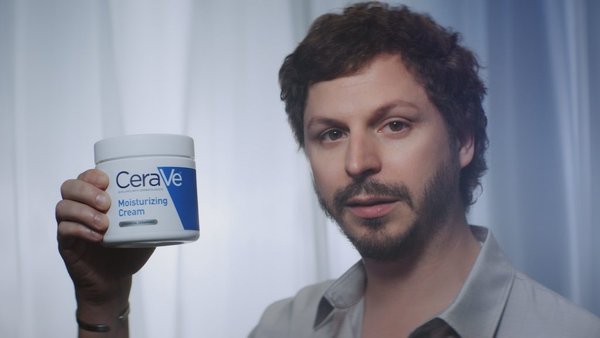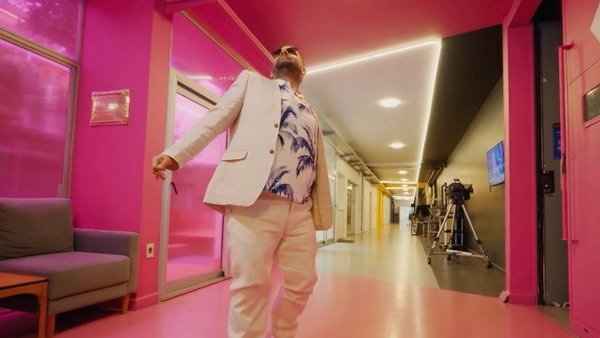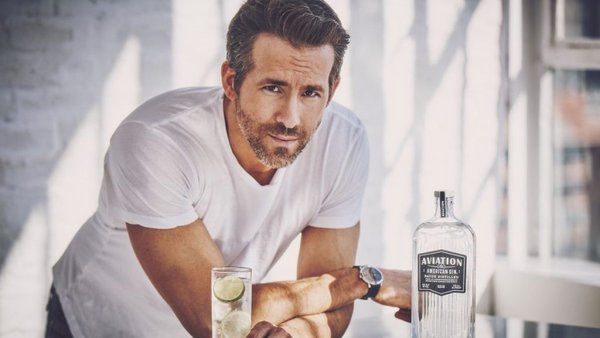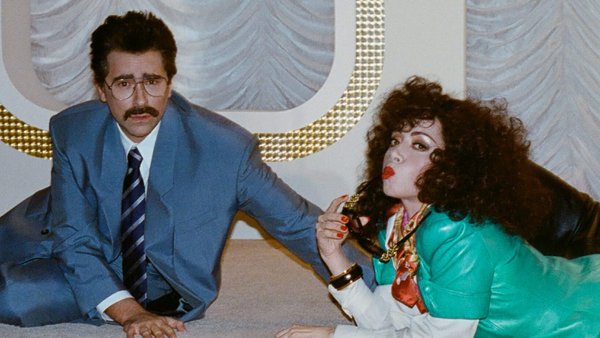In November 2023, Contagious covered the Specsavers campaign, The Misheard Version, created by Golin, London. To promote its audiology services, Specsavers teamed up with 1980s popstar Rick Astley to launch a re-recording of his song ‘Never Gonna Give You Up’ – this time with some lyrics amusingly tweaked.
The hit was rewritten to include some of the public’s most puzzlingly misheard lines, such as replacing ‘A full commitment’s what I’m thinking of’, with ‘A broken mitten’s what I’m thinking of’.
To tease the campaign and test the sharpness of the public’s hearing, the song was initially shared by Astley on X when he posted: ‘We’ve all heard this one before…or have we?’ The next day all was revealed when Specsavers released a two-and-a-half minute spot across Facebook, Instagram, X, TikTok and YouTube, that included production footage from behind the scenes.
The campaign officially launched on 24 October 2023 and was supported by social from Tangerine, and media from Manning Gottlieb and Bauer Media.
Further content is being rolled out across social media, radio, broadcast and print, including a miniseries titled ‘Rick’s guide to never giving up on your hearing’, which will feature Astley, one of Specsavers’ audiologists and TV doctor Michael Mosley.
Results Updated 29/4/2024: The teaser tweet on Astley’s own social channels became his most-viewed tweet of all time. The campaign also earned push media on This Morning, The Times, Sky, Mail Online and drove a Google Trends spike.
According to the agency, hearing test bookings increased by 1,220% above the initial target, with Specsavers reporting a 66% year-on-year increase in bookings during launch week versus the target of 5%. The song was played over 20 million times in the first eight hours of the campaign, driving a 138% increase in hearing loss searches and making hearing the UK’s number one trending topic.
The campaign garnered 400 pieces of coverage, more than 100 million reach. Earned coverage also directly drove business impact: Lorraine TV coverage resulted in +19% on forecast (call centre volume), and This Morning coverage drove +15%.
At the 2024 Cannes Lions International Festival of Creativity, it won a Grand Prix and a Gold in the Radio & Audio category, and the Grand Prix in PR.
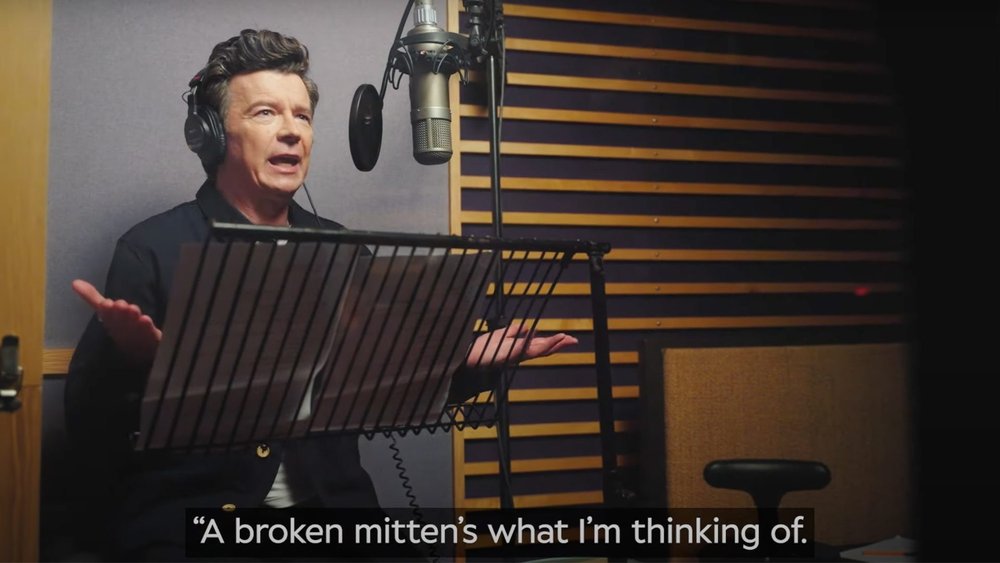
To find out more about the insight behind the campaign, Contagious spoke to Specsavers head of consumer PR, social media & brand activation Lisa Hale, and from Golin, London, George Bryant, chief creative officer, and Alex Wood, executive creative director. They told us:
Specsavers is often regarded as a glasses supermarket chain, not always recognised for its expertise, or its audiology services
The tone of conversations around hearing loss tends to be more negative than for vision. Specsavers wanted to bring more levity to the topic and normalise hearing check-ups
The brand sees misheard lyrics as a relatable way to get the public to talk about hearing loss because it is a humorous and universal experience
Specsavers saw an unprecedented rise in the number of hearing check-ups booked during the first week of the campaign’s release
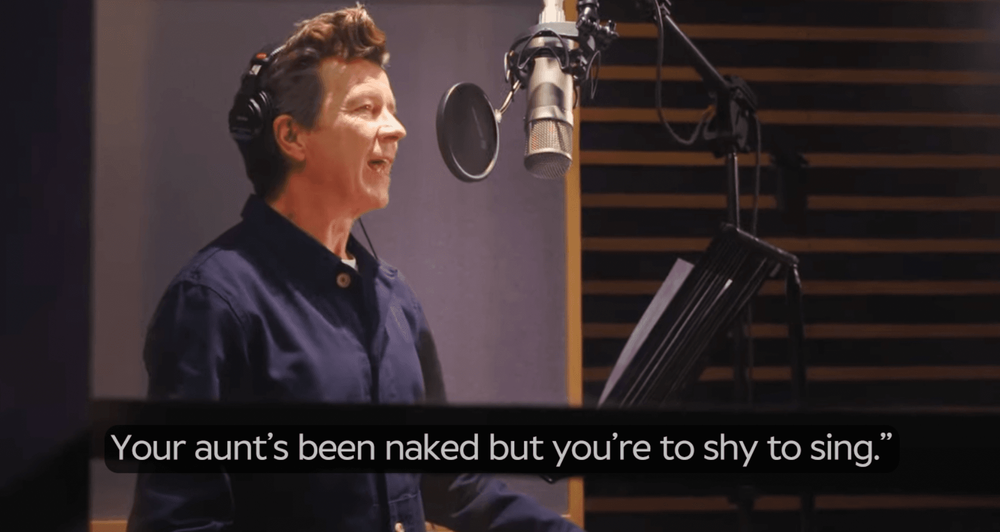
Alex Wood, Golin, London
What are Specsavers’ key challenges right now?
Lisa Hale: If we look at it from a new customer perspective, those who reject us do so as they do not see us as experts. We have a challenge of coming across as a glasses supermarket chain, when in fact our stores are locally owned and run by experts. So we have a big perception change job on our hands. People are also not aware of our services such as home visits or audiology.
So our key challenge right now is perception change, increase consideration and raise awareness that we’re more than just sight tests and glasses.
What are the biggest challenges that Specsavers faces in terms of its audiology services?
Hale: Awareness of our hearing care services is still low in comparison to our eye care offering. We own market share of voice, when it comes to the glasses market, but not audiology. People also just don’t know about the importance of prioritising their hearing health. For example, research shows people often wait a shocking 10 years to address changes in their hearing but don’t know that if you get it checked and addressed early on, you can limit the damage in the long run.
George Bryant, Golin, London
What was the brief for this campaign?
Alex Wood: Raise awareness that Specsavers offers hearing services and reduce stigma around hearing – positioning the brand as experts in audiology in the process.
George Bryant: Right in the middle of the brand name is the challenge. A brand known for vision had to cut through in the audiology space. We knew we had to subvert the conventions of fear and loss in the category to bring a new level of positivity and unexpected joy to the conversation.
Hale: Alongside the objective of driving hearing test bookings and starting a cultural conversation about hearing, making Specsavers better known for audiology was a goal – with the same tone as the ‘Should’ve Gone to Specsavers’ work.
What was the insight behind the idea?
Wood: ‘Hearing loss’ is isolating, but ‘mishearing’ connects. The conversation around ‘hearing loss’ is focused on ageing and serious decline. It’s really heavy and negative. Unsurprisingly, no one wants to hear about it. But ‘mishearing’ is considered everyday and universal. It connects you to others through that shared experience – we can all relate to mishearing something; often with humorous results. We loved the idea of leaning into this humour and switching the tone of the issue.
Bryant: The Misheard Version brings a new level of humour to healthcare marketing. Healthcare work can too often feel overly serious and fearmongering. But by bringing levity and wit to the category, we were able to destigmatise the issue and drive real commercial success.

What does success look like for this campaign?
Hale: The main objective of this campaign was to start a national conversation around hearing loss, and increase hearing test bookings by 5%. It was a marketing objective that we used an earned-led integrated approach to pursue. Beyond this overall goal, for all campaigns we set out key KPIs that ladder back to the marketing brief.
These KPIs have fed into a measurement framework for the campaign, which looks at both outputs (numbers) and outcomes (the impact, ie, change in behaviour/perceptions) driven by the campaign. As part of our evaluation, we have commissioned a pre- and post-campaign survey, through YouGov, which measures a number of outcomes for the campaign, including hearing loss stigma and awareness/consideration of Specsavers audiology services.
You mentioned that you had KPIs for attention. Was this motivated by any research?
Hale: In order to change perceptions of a brand or impact consideration, you need to hold attention (9 seconds according to a Lumen and Teads study). In a world where people are seeing more than 10,000 ads a day, how do we stand out? We need to be disruptive to capture attention in high-attention formats (such as PR), and we need to be audience-first in order to hang on to that attention once we capture it.
Who is the target audience for this campaign and why?
Wood: The bullseye was 40+ (influencers and those experiencing hearing loss), but the wider audience was naturally broad, as hearing can be something that affects everyone. This made the creative challenge harder as the concept needed to resonate widely across demographics.
Bryant: The Misheard Version is a strong illustration of the power of universal insights. The insight that misheard lyrics connect and entertain us, can be applied across all our key audiences and markets.
In many ways it is a mass hearing test, subverting traditional communications to act as an audiology service
George Bryant, Golin, London
What in particular about Rick Astley made him the right partner for Specsavers in this campaign?
Wood: ‘Never Gonna Give You Up’ itself is one of the most famously misheard songs. So we started conversations with Rick, pre-Glasonbury, knowing he had a strong cult following and was relevant among a younger audience too, particularly in Tikok, thanks to the #RickRoll trend and his gaming space work with Fortnite. At the same time, he had mass appeal with an older millennial audience (our influencers). This meant we could use the momentum among his cult following and younger audiences who influence culture – as a springboard to propel the message.
Across 2023, he went on to experience a wider cultural comeback following his Glastonbury performance and upcoming new album – which was perfect while we were mid-planning the campaign. His age is that of the target audience and we discovered during execution that he is suffering from hearing loss himself – so can authentically speak from personal experience.
What are the biggest barriers that stop more people going for a hearing checkup, compared to visiting the opticians? How does this campaign tackle these?
Wood: Fear of ageing and loss is the greatest barrier – driven by the way hearing loss has traditionally been approached as a topic compared to our eyesight. The whole conversation about hearing is often framed in heavy, negative terms – loss of the sounds you love, loss of ability to connect with others, or the wearing of a device that signifies old age. Whereas sight decline and glasses are considered much more everyday and universally experienced. It’s a softer conversation that doesn’t trigger people to avoid testing.
This campaign tackled this imbalance by shifting the tone of the conversation around hearing loss to be more like the one around eyesight – by focusing on mishearing and humour as a way to come at the topic in a lighter way. By turning the world’s most famously misheard song into a hearing test you can’t ignore, we aimed to change the existing conversation.
Bryant: Brands shouldn’t hide their commercial goals, they should forefront them. In many ways it is a mass hearing test, subverting traditional communications to act as an audiology service. As communicators our job is to remove the barriers between audiences and services, whether they be physical barriers or emotional ones. The right socially led thinking can overcome physical barriers as well as emotional ones. The Misheard Version challenges the stigma of hearing tests, but also rapidly reduces the path to purchase.
Was it always the plan to record a misheard song, even if Specsavers couldn’t get Astley on board?
Wood: Yes – the Misheard Version concept was designed to work with any famously misheard song. Rick was just perfect due to his and the song’s cultural status across our wide target audience – and the legacy of ‘Rick Rolling’, which we played on with the launch strategy. Later we found he had undiscovered hearing loss, which added a powerful personal dimension to the message.

Tell us about the media plan in place – how did you ensure this would create noise?
Wood: As an earned-led integrated idea, creating organic noise is in the Misheard Version’s DNA – with paid used to extend reach and frequency. First, we posted the track on Rick’s TikTok without any paid support and watched that blow up as people questioned their hearing. It was Rick’s highest-performing social media content ever – all organic. Then we went live across paid, owned and earned channels including mass-earned media, Bauer paid radio, social (X, Instagram, TikTok) and digital (YouTube) with the full campaign and supporting content. The Misheard Version is an idea with longevity. It can be used in a number of ways to keep taking a ‘hearing test’ to people; rather than wait for them to come to us. The next run of activity is hijacking radio programming. Listeners will think the DJ has just played the original ‘Never Gonna Give You Up’; but they’re actually in for a live hearing test.
What challenges did you face along the way and how did you overcome them?
Wood: Re-recording one of the world’s most iconic songs was tricky – especially as we were making it sound totally ridiculous. But by staying true to how people have genuinely misheard the lyrics, and focusing on the goal of changing the hearing loss conversation, we managed to bring all parties along with us. Rick and his team were great and we eventually got everything we needed.
What have been your greatest learnings from this campaign?
Wood: The commercial effectiveness of earned-led integrated ideas is no joke.
Bryant: It’s a great demonstration of how earned-led thinking can drive a new level of commercial success, not just exceeding all social benchmarks but smashing the key commercial KPI’s. Earned-led thinking has a unique power to shortcut the purchase process as it did in this instance, directly driving a rise in hearing tests.
